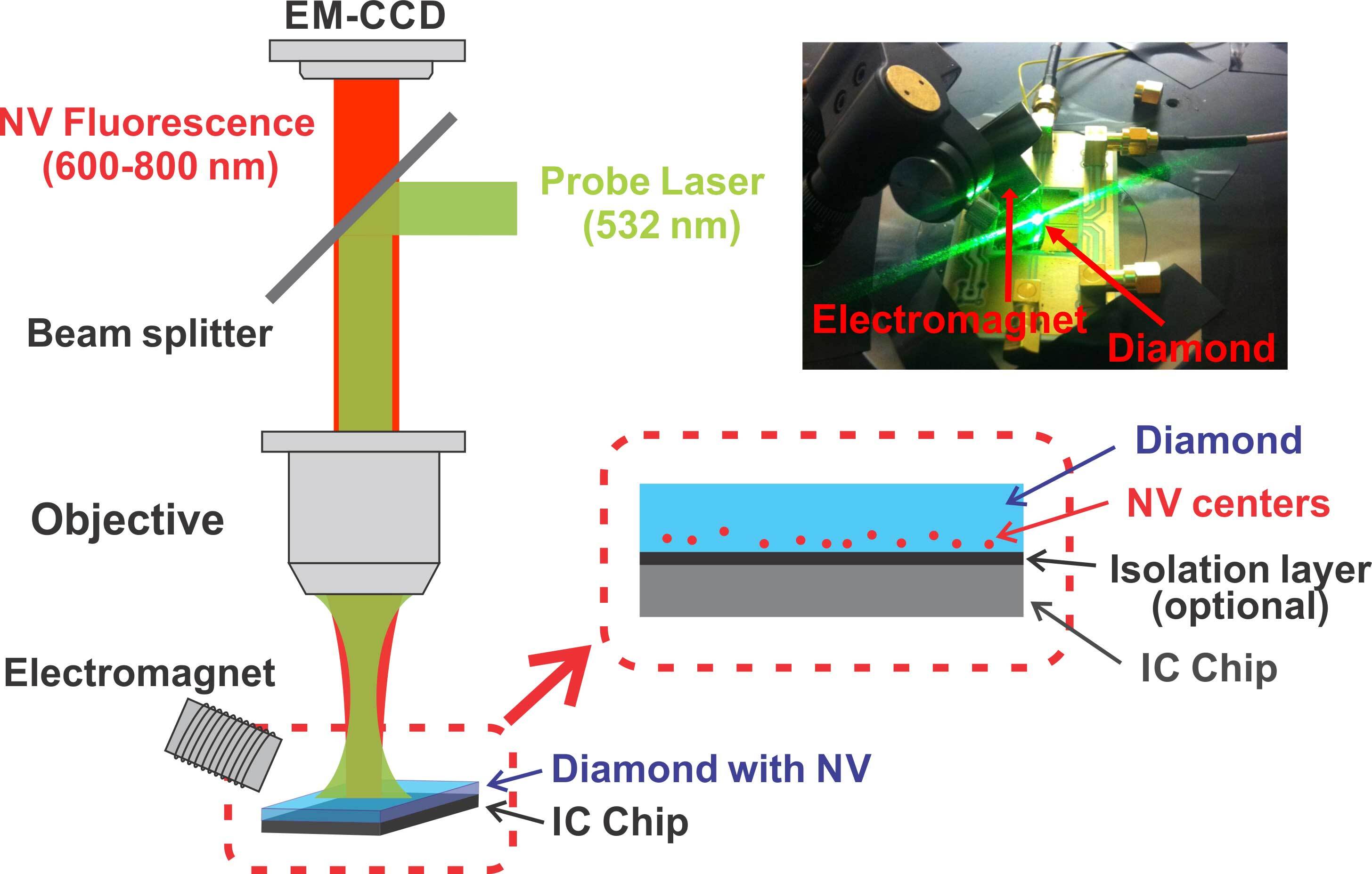Non-invasive real-time detection of hardware trojans
Integrated circuit (IC) trojans are a significant security threat to our communications, cloud and IT infrastructure. These rogue modifications to semiconductors can be triggered at any point and represent a latent risk. A hostile government or entity could introduce a hack into semiconductors, that once fabricated could then be embedded into smartphones, telecommunications equipment or IT infrastructure. In addition to being of great importance to chip manufacturers, software companies and systems providers, this issue is recognized as a matter of national security.
The invention described here is a device that monitors the operation of integrated circuits in real time to ensure that the device has not been hacked. It does so by measuring the RF signals emitted from the ICs. It is non-invasive and is envisioned as an in-line process that can be used by semiconductor manufacturers to verify the authenticity of the chips as they are being fabricated. The approach is an application of diamond magnetometry and leverages the research of the Loncar lab to exploit the unique properties of diamond. It is a new technique for ultrahigh spatial resolution detection of near-field electromagnetic emission, using negatively charged nitrogen-vacancy (NV-) color centers in diamond.
Key advantages
- non-invasive
- real time
- megapixel imaging
- ultrahigh spatial resolution
Specifications
- resolution of a 200 × 200 μm² area with <1 μm spatial resolution (potentially <100 nm)
- detection bandwidth 170 MHz (potentially up to 100 GHz) around 2.87 GHz with resolution bandwidth 0.5 MHz
- 33 dB dynamic range in detectable power between -45 dBm (30 nW) and -12 dBm (60 μW)
- 45 nT/Hz^½ sensitivity
- 56Hz (potentially kHz) temporal resolution with 2.5 kHz / Hz^½ sensitivity for detecting frequency modulated RF signals
- sub-megahertz electromagnetic frequency spectrometry
Integrated circuit (IC) trojans are a significant security threat to our communications, cloud and IT infrastructure. These rogue modifications to semiconductors can be triggered at any point and represent a latent risk. A hostile government or entity could introduce a hack into semiconductors, that once fabricated could then be embedded into smartphones, telecommunications equipment or IT infrastructure. In addition to being of great importance to chip manufacturers, software companies and systems providers, this issue is recognized as a matter of national security.
The invention described here is a device that monitors the operation of integrated circuits in real time to ensure that the device has not been hacked. It does so by measuring the RF signals emitted from the ICs. It is non-invasive and is envisioned as an in-line process that can be used by semiconductor manufacturers to verify the authenticity of the chips as they are being fabricated. The approach is an application of diamond magnetometry and leverages the research of the Loncar lab to exploit the unique properties of diamond. It is a new technique for ultrahigh spatial resolution detection of near-field electromagnetic emission, using negatively charged nitrogen-vacancy (NV-) color centers in diamond.
Key advantages
- non-invasive
- real time
- megapixel imaging
- ultrahigh spatial resolution
Specifications
- resolution of a 200 × 200 μm² area with <1 μm spatial resolution (potentially <100 nm)
- detection bandwidth 170 MHz (potentially up to 100 GHz) around 2.87 GHz with resolution bandwidth 0.5 MHz
- 33 dB dynamic range in detectable power between -45 dBm (30 nW) and -12 dBm (60 μW)
- 45 nT/Hz^½ sensitivity
- 56Hz (potentially kHz) temporal resolution with 2.5 kHz / Hz^½ sensitivity for detecting frequency modulated RF signals
- sub-megahertz electromagnetic frequency spectrometry
U.S. Patent(s) Issued: US20180284026A1
Case Number: 6053


